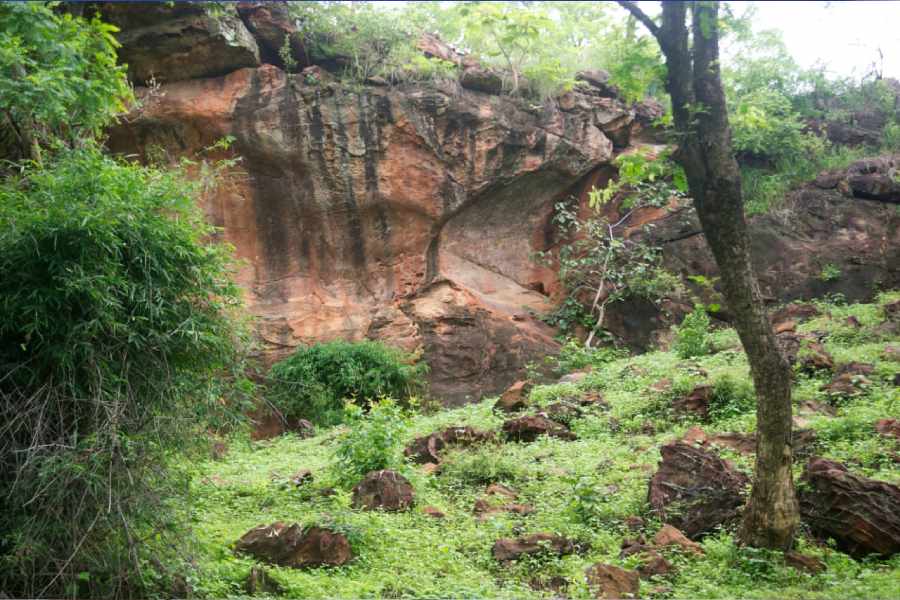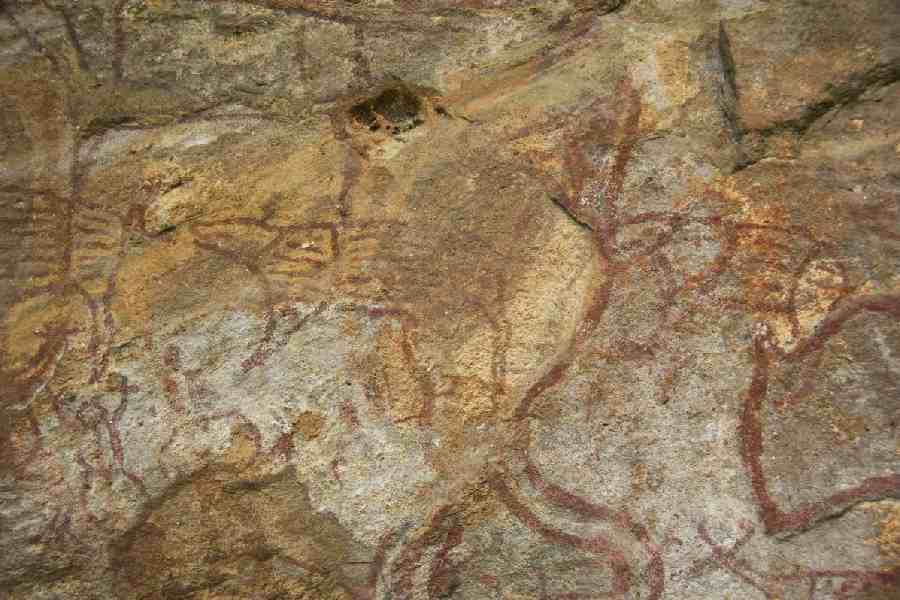The forest department at the Bandhavgarh National Park and Tiger Reserve in Madhya Pradesh has made a spectacular discovery of hitherto unknown prehistoric rock shelter paintings in what is known as the Manpur buffer zone of the park.
There are many rock shelters in these parts of Madhya Pradesh, scored by the art of ancient hunter-gatherers in the form of lively representations of animals and abstract markings. But until now, no evidence of rock paintings from such early times had been found in Bandhavgarh.
This new unveiling of ancient rock art in Bandhavgarh happened a couple of months ago, thanks to the Manpur forest department staff. It was reported to the deputy director of the Bandhavgarh Tiger Reserve, who then visited the site in early June.
He immediately drew our attention to the paintings because he was aware of Ashoka University’s work on the archaeology of Bandhavgarh. We visited the shelter on July 29 and, inspired by what
we encountered, have drawn attention to a few of its features here.
But first, how do archaeological discoveries take place and what do such discoveries tell us about those involved in uncovering the past? These are questions that constantly come up in history classrooms since students are deeply interested in understanding how the material past was discovered.
Like many nations with long histories, India is rich in archaeological sites and monuments. These continue to be discovered by government institutions such as the Archaeological Survey of India and state directorates of archaeology, and by scholars and academics attached to universities and colleges.
More often than not, though, India’s archaeological heritage appears to inhabit a completely different sphere from India’s natural heritage. Take the Bandhavgarh National Park and Tiger Reserve, for example.

What draw people to it are the expectation and thrill of getting a glimpse of its tigers, with the forest department seen as the institutional preserver of Bandhavgarh’s wildlife and natural habitats. No tourist thinks of the forest department as being in the vanguard of unearthing monuments or as an institutional discoverer of archaeologically significant localities.
Actually, forest department folks have an intimate familiarity with archaeological sites and monuments that lie inside forested tracts and grasslands across India. During the course of patrolling national parks and reserves, they also come across new sites that they recognise as being of archaeological significance. The most recent discovery by them of a painted rock shelter in the Manpur buffer zone of Bandhavgarh highlights this well.
Known locally as Sita Chowk, the rock shelter is deep inside the forest and as one travels by road to it, the area appears at a fair distance from the touristy Tala zone of the tiger reserve. The distance is much less as the crow flies – some 28km from Sita Chowk to the Chakradhara meadow in Tala.
There is a line of rock shelters that can be seen from the dirt track that leads to them and as one gets close to them, one sees prehistoric painted images crowding each other inside a shallow, naturally hollowed space (Fig. 1).
Done mainly in red ochre, the paintings are superimposed at several places on the rock face, one on another. There are various renderings here: deer, frogs, a line of boars following each other and a single head of cattle. There are also abstract designs like a line of triangles placed horizontally, and a couple of circles.
Taken together, in the opinion of Dr Saleem Shaikh who has worked on rock art in different parts of India, there are layers of paintings here, some going back to prehistoric times while the others are of the historical period.
A thorough documentation of the paintings needs to be done so that more is known about the length of time over which these were made. It helps that they have survived remarkably well and this we owe to the fact that the artists here chose a hollow that was protected by an overhang of rocks.
Later communities too continued to inscribe on the same rocky canvas, possibly as part of beliefs and practices around the sacredness of the spot.
The first artists here were hunter-gatherers. The wild creatures painted by them – from deer to wild boar - highlight this well. The antiquity of their creations is further borne out by what is found outside the shelter.
Scattered across the slopes below are a large number of chipped stone flakes and tools in quartz and chert. These are diminutive tools, known as microliths, and are considered material markers of the presence of advanced hunter-gatherers of the distant past.
Sita Chowk is the first known rock shelter with prehistoric paintings in the Bandhavgarh area. Hunter-gatherers who were also painters are known from many parts of Madhya Pradesh – Bhimbetka, Satpura and Panchmarchi being among the best known.
In Bandhavgarh’s Tala zone, there are a handful of painted rock shelters but these belong to historical times. The human figures and the depictions of horses and horse riders there clearly suggest this. Sita Chowk’s rock canvas, on the other hand, is marked by forest creatures of different kinds.
As we move forward, there is every chance that more painted rock shelters will be discovered here. We can only hope that researchers and visitors who come to this part of the Bandhavgarh National Park and Tiger Reserve will acknowledge and celebrate the fact that it was foresters who found the first prehistoric painted rock shelter here, not academics or archaeologists.











